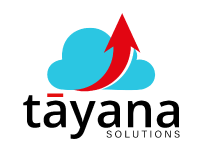Comparing Acumatica vs Microsoft Dynamics GP
Microsoft Dynamics GP has been widely recognized as the most flexible customer relationship management for manufacturing for over a decade. Based on the Microsoft platform, Dynamics delivers a premier ERP solution on a global scale.
Strengths of Dynamics GP are –
- Strong feature set out-of-the-box
- Third-party software support
- Support for vertical industries
Acumatica is a cloud-based ERP solution with rich functionality and customization and strong third-party software support. It is specifically designed to be accessible through the cloud using current technology. This means it can offer more features and functions than Dynamics GP and at a lower long-term price
| Functionality | Acumatica | Microsoft Dynamics GP |
|---|---|---|
| True cloud (built for cloud) | ||
| Full function ERP | ||
| Full relational database export | ||
| Customization using industry standard tools | ||
| Upgrade on your schedule | ||
| Flexible licensing options based on customer requirements | ||
| Multiple deployment options (cloud, on-premises, hybrid) | ||
| Scale as you grow | ||
| Lower Total Cost of Ownership (TCO) |
Features of Acumatica that are different compared to Dynamics GP
True cloud: Acumatica offers true cloud ERP, which means all features are accessible through the Internet using a standard browser, eliminating the need for any additional installation on your system. Acumatica can be deployed on-premises or in the cloud without any additional equipment or software licensing requirements. Dynamics GP is a traditional client-server product and was NOT built for the cloud. GP can be HOSTED on a remote server as a cold backup only. It CANNOT be accessed or used live from that location.
Customizations using industry-standard tools: Acumatica is built using industry-standard .NET, which means that it is highly customizable, fast to deploy, and easy to modify. Microsoft Dynamics GP uses a proprietary language that limits ability to leverage third-party app integration, leading to high costs of modification.
Multiple deployment options (cloud, on-premises, hybrid): Acumatica and Dynamics GP both support cloud, on-premises and hybrid deployments. Acumatica’s native web browser interface allows users to quickly and easily configure and manage their systems. Dynamics GP requires SharePoint to be installed and operated to enable a cloud configuration. In addition, SharePoint requires users to purchase additional licenses increasing TCO.
Scale as you grow: When choosing an Enterprise Resource Planning (ERP) solution, you must consider your future needs, not just your company’s current needs. Both products allow you to scale resources to support a growing company, but Acumatica only charges by the computing power required and not by users.
TCO: Acumatica and Dynamics GP offer similar business application functionality, but there are differences in licensing and pricing. Acumatica works as a SaaS offering, and as such, the user count is the only factor that determines your cost to use it. On the other hand, Dynamics GP works as an on-premises offering and requires that you have separate licenses for each user, and you can’t use it as a SaaS solution unless you purchase the SharePoint license.
Wondering How We Work?
About Microsoft Dynamics GP
Microsoft Dynamics GP is designed on an outdated system architecture that prevents the product from evolving and keeps it from advancing into the future and which becomes an issue in scenarios designed for the latest technologies, including cloud deployment options, customizations using current development tools, and integration with CRM.
There are drawbacks of Microsoft Dynamics GP –
- Microsoft Dynamics GP still uses the same programming language (Dexterity) it used back in 1992.
- Microsoft Dynamics GP software was built on the foundation of Microsoft technology, and it leverages Microsoft SharePoint integration to bring your business to the cloud.
- Because Dynamics GP and Dynamics CRM use separate servers, any integration between the applications requires additional work to support the database access.
- As a GP user, you'll need a new implementation on a different ERP to move to Business Central. We don't have a direct migration path from GP to Business Central.
Acumatica offers the complete ERP and CRM solution. It can be deployed on-premise or in the cloud and has unlimited user licenses. Acumatica is the perfect choice for companies looking for a low-cost option with performance, functionality, and ease of use.
When considering an ERP solution to fit your company’s needs, it’s important to take your time and weigh your options. We encourage you to research your business requirements over the next three to five years and ask questions.
Make sure you take some time to review ERP Software Comparison to help you find the solution that is right for you.
